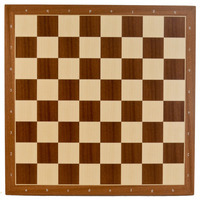Stones on a chessboard
Two people decide to play the following game:
They alternate placing stones on the squares of a chessboard (one stone per square), and can only place a stone on a square that currently borders (by edges, not across a diagonal) an odd number of empty squares, i.e. squares without stones already on them.

So for the initial move, for example, a player could place a stone on any edge square other than a corner, since they each border exactly three empty squares.
The game continues until there are no more available moves.
The winner is the person who places the last stone!
Which player has a winning strategy?
Image credit: https://www.wholesalechess.com
This section requires Javascript.
You are seeing this because something didn't load right. We suggest you, (a) try
refreshing the page, (b) enabling javascript if it is disabled on your browser and,
finally, (c)
loading the
non-javascript version of this page
. We're sorry about the hassle.
The second player can always place a stone in a position symmetric to the other player's last move (symmetric by a 1 8 0 ∘ rotation about the board's center), and eventually win!
This strategy works, since your symmetric move will always be on the same colored square as the previous move, so the other player's move won't have effected the number of empty squares bordering it, so if the previous move was valid, so will your symmetric move.